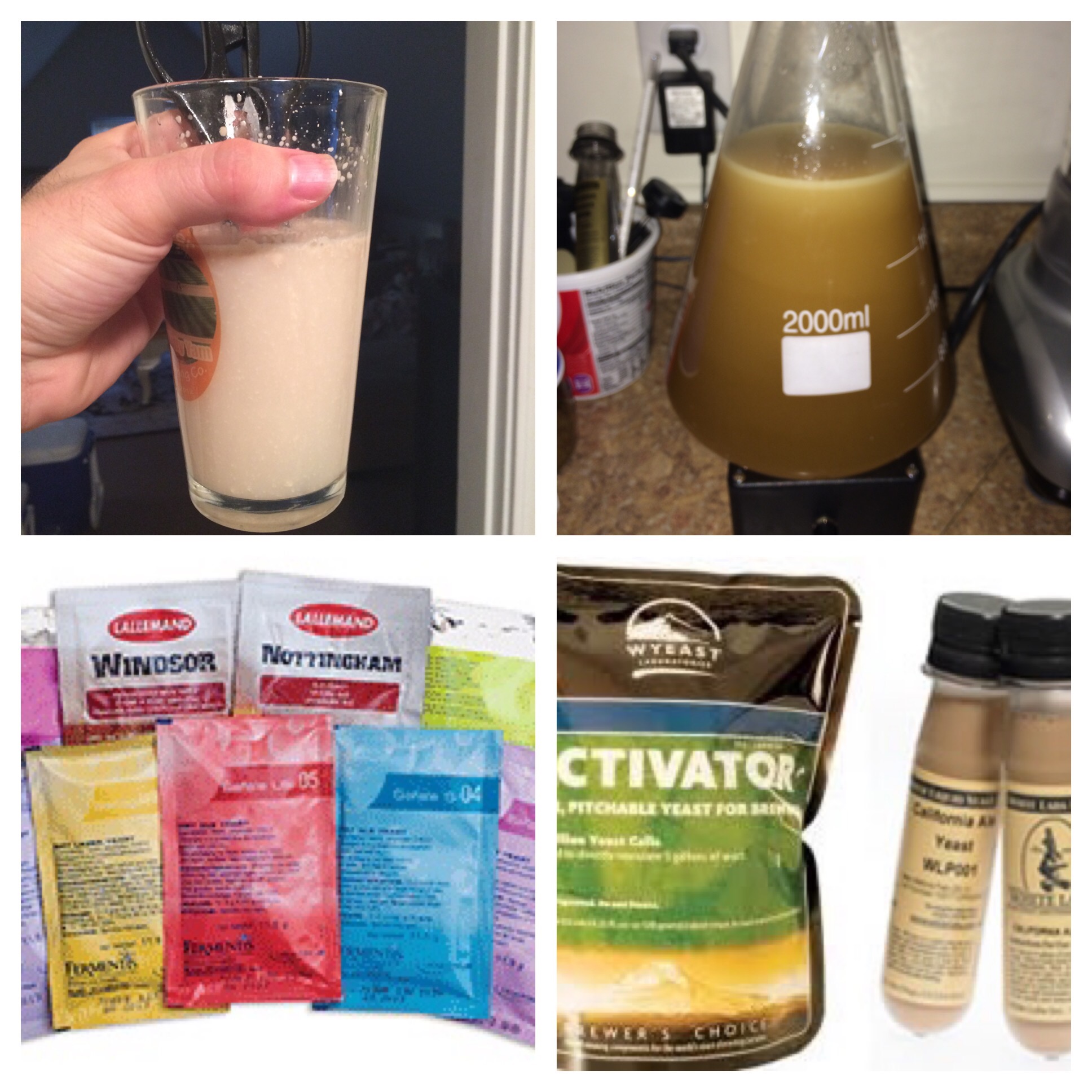Like glass versus plastic equipment, there are pros and cons to using dry yeast or liquid yeast. I eluded to some of them when I purchased my stir plate.
 |
| No shortage of yeast options. |
Most brewers start with dry yeast because it's the easiest to work with. The instructions on the sachet say to sprinkle the yeast onto the wort and call it a day. Most brewers, myself included re-hydrate their yeast. Essentially you add the yeast to some water about half an hour before pitching the yeast. This gives the yeast time to reconstitute itself into it's natural, liquid form before devouring all the sugars in the wort.
Another aspect to the ease of using dry yeast is that if does not require a yeast starter. Unlike liquid yeast, most dry yeasts contain more than enough cells in the package to ferment most worts. If brewing a high-gravity beer all you need to do is buy another package.
It's always good to have a few packets of dry yeast on hand at your homebrewery. Whereas liquid yeast loses most of its vitality after a few months, dry yeast is good for up to two years if kept cool in a refridgerator or freezer. If you have a spontaneous brew day and haven't prepared a starter of liquid yeast, dry yeast is always ready to go. If there is something wrong with your liquid yeast, dry yeast can always be used as a Plan B like with my recent Curly's Milk Stout brew day.
The dry yeasts available today are excellent. They are every bit as good in quality as liquid yeasts. Many commercial brewers use dry yeast. I spoke with one at a local bottle shop who described the huge bricks of Safale S05 they pitch into their worts. Many home brewers have followed suit. My cousin and occasional co-brewer Andy uses dry yeasts almost exclusively in his recipes and kits that he brews.
Dry yeast is less expensive, but dry yeast manufactures do not recommend reusing dry yeast. If you have several batches lined up that are similar styles or will use the same yeast, liquid yeast can be more affordable if you reuse it.
Marshall Schott aka Brülosopher, developed a method of overbuilding and harvesting yeast from his starters to save for future. It is also possible to freeze liquid yeast. I have a frozen container of The Yeast Bay's Vermont Ale Yeast from the summer of 2014. With any luck I'll be able to thaw it out and slowly step it up with a series of yeast starters on my stir plate next time I want to use it.
Regular readers of the blog will know, but a lot of other people might not realize the profound effect yeast can have on the flavor, aroma, and appearance of the beer. There are many more varieties of liquid yeast available than there are dry yeast. The Geary's clones we brewed a few months ago would have been perfectly good if fermented with dry yeast, but the beer wouldn't have been as close to the commercial versions if we didn't ferment it with Ringwood Ale yeast. Ringwood is only available in liquid form.
There are plenty of commercial and homebrewers that use Chico (1056/WLP001/S05) as their house strain. As a brewer I like to differentiate my beers by using different yeasts. For that reason and the reusability I gravitate more toward liquid yeasts. The last couple beers I made that called for Chico like my Celebration Ale clone, I used the dry S05 version because it was cheaper and easier.
Every brewer should have a few packets of dry yeast on hand. I try to keep at least one packet of S05, Safale S04 which is a versatile English strain you can never go wrong with, and Nottingham which can be used in almost any style depending on the fermentation temperature.
With liquid yeast you can have a yeast bank at home. You can do this via Brülosopher's method of overbuilding and harvesting, or you can harvest yeast from a finished beer, rinse it, and repitch it into a future batch. This is what most commercial breweries do. They also have the technology to make sure the yeast they are reusing hasn't been overly stressed or mutated. For a homebrewer I would suggest freezing any yeast you don't plan on using within the next four to six months.
Follow me on Instagram @wouldbebrewmaster
Like The Would-be Brewmaster on Facebook
Share what beers you are drinking with me on Untappd
No comments:
Post a Comment